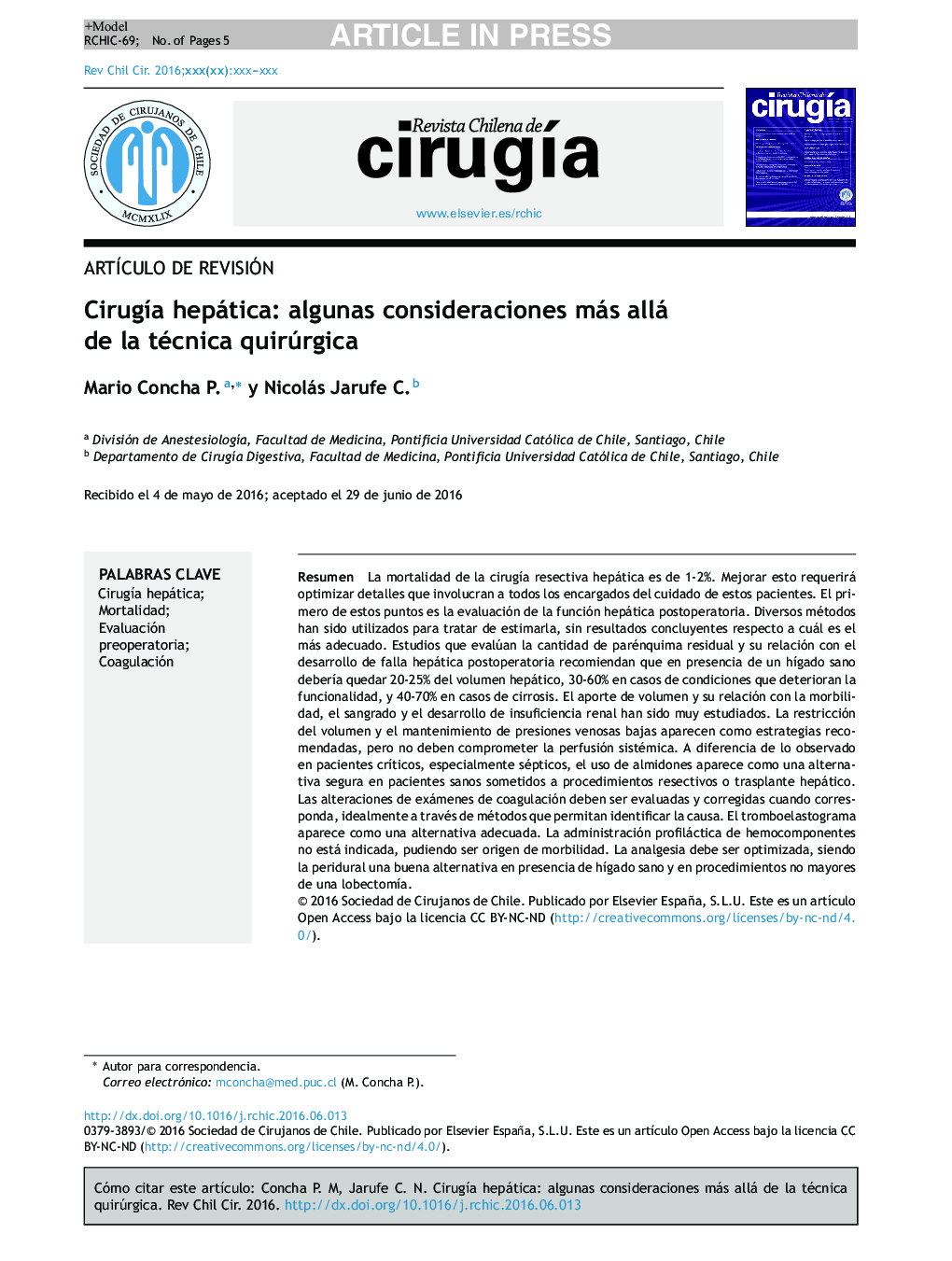| Article ID | Journal | Published Year | Pages | File Type |
|---|---|---|---|---|
| 8836534 | Revista Chilena de Cirugía | 2017 | 5 Pages |
Abstract
The mortality of liver resection surgery is 1-2%. Improve this will require optimizing details involving all caregivers of these patients. The first of these points is the evaluation of postoperative liver function. Various methods have been used to estimate it, without conclusive results regarding what is the most appropriate. Several studies evaluating the amount of residual parenchyma and its relationship to the development of postoperative liver failure recommend that in the presence of a healthy liver should be 20-25% of liver volume, 30-60% in cases of conditions that impair the functionality and 40-70% in cases of cirrhosis. The contribution of fluids administration and its relationship with morbidity, bleeding and development of renal failure have been studied. The volume restriction, maintenance of low central venous pressures appear as recommended strategies but must not compromise systemic perfusion that can determine organ dysfunction. Unlike what was observed in critically ill patients, the use of starches appears as a safe alternative in healthy patients and those undergoing liver transplantation. Alterations in coagulation tests should be evaluated, ideally through methods that allow to identify the cause. The thromboelastography appears as a suitable alternative. Prophylactic administration of blood components is not indicated and can be a source of morbidity. Analgesia should be optimized, being epidural analgesia a good alternative in the presence of healthy liver and procedures involving no more than a lobectomy.
Keywords
Related Topics
Health Sciences
Medicine and Dentistry
Surgery
Authors
Mario Concha P., Nicolás Jarufe C.,
